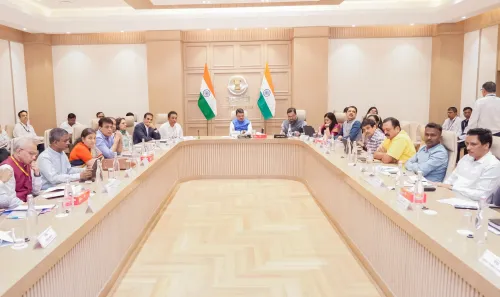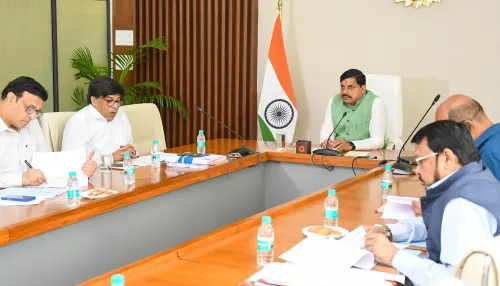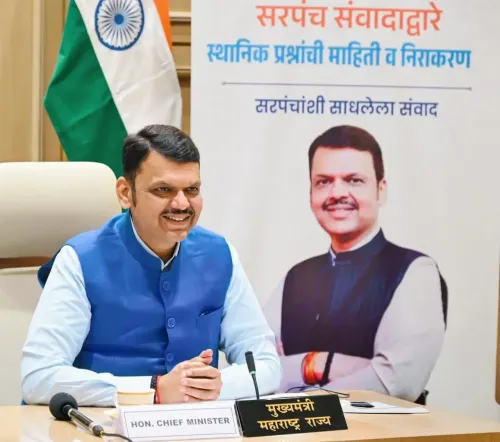Is the ISI Recruiting 300-400 Influencers in India?

Synopsis
Key Takeaways
- Influencers are being targeted by ISI for espionage.
- Recruitment involves enticing influencers with likes and free travel.
- Content created often promotes pro-Pakistan narratives.
- Blackmail is used to extract sensitive information.
- Influencer propaganda serves to reshape Pakistan's image.
New Delhi, Oct 3 (NationPress) The influencer espionage network in India is more intricate than previously believed, evidenced by the recent arrest of YouTuber Wasim Akram from Haryana. The involvement of influencers in the ISI’s spying operations marks a significant departure from traditional tactics.
While methods such as honey trapping and blackmail raise alarm, the engagement of influencers poses an even greater threat. Alongside the acquisition of information, propaganda forms a critical component, which Pakistan urgently seeks following its exposure.
An official from the Intelligence Bureau revealed that the ISI aims to recruit approximately 300 to 400 influencers with substantial followings into their ranks. Notably, these influencers are enticed by the prospect of likes and views, rather than mere financial compensation. It’s a comprehensive package that includes monetary incentives, free travel, and increased social media engagement.
Investigative bodies are closely monitoring numerous influencers to ascertain their content. While it may not always be anti-India, it often supports Pakistan, circulating widely within the country and enhancing viewership.
The situation escalated with the arrest of YouTuber Jyoti Malhotra by Haryana police, leading to further detentions and revelations about their operational methods.
Investigations indicate a specialized team in Pakistan focused on identifying susceptible influencers. A thorough vetting process is conducted, and once vulnerabilities are identified, the Pakistan High Commission in India is alerted.
Officials at the High Commission then establish contact with these influencers, inviting them to gatherings. Subsequently, they are offered complimentary trips to Pakistan, with visa arrangements facilitated.
According to an official, the ISI targets influencers motivated by likes and views. The allure of free travel, coupled with the promise of significant engagement, is often enough to ensnare them.
Upon arrival in Pakistan, they are prompted to create content praising the nation, its culture, and cuisine. The ISI compensates them for producing such content, and once they accept payment, the second phase of the trap commences.
Using this leverage for blackmail, these influencers are coerced into gathering and relaying sensitive information to Pakistan. At this juncture, there is often no turning back. However, the ISI prioritizes the propaganda generated by these videos over the intelligence collected.
The vast reach of these influencers means that once content is produced, it garners even more subscriptions from Pakistan and its diaspora worldwide.
For example, Jyoti Malhotra had 381,000 subscribers at the time of her arrest, while another influencer spy, Jasbir Singh, boasted 1.1 million. The ISI’s objective with such videos is to disseminate propaganda, countering negative portrayals of Pakistan as a failing economy.
Such content assists in shaping a more favorable narrative, portraying the nation as prosperous with a rich heritage and culture.
In light of these arrests, security agencies are deliberating on the implications of influencer involvement. The ISI understands that their actions often evade scrutiny, granting these individuals considerable access under the guise of content creation. This can be advantageous for the ISI in gathering intelligence on India.
During Operation Sindoor, influencers were discovered to be providing real-time intelligence regarding Indian military movements and details about military installations. These influencers can gather such information more effectively than traditional spies due to the lower level of suspicion surrounding them.









